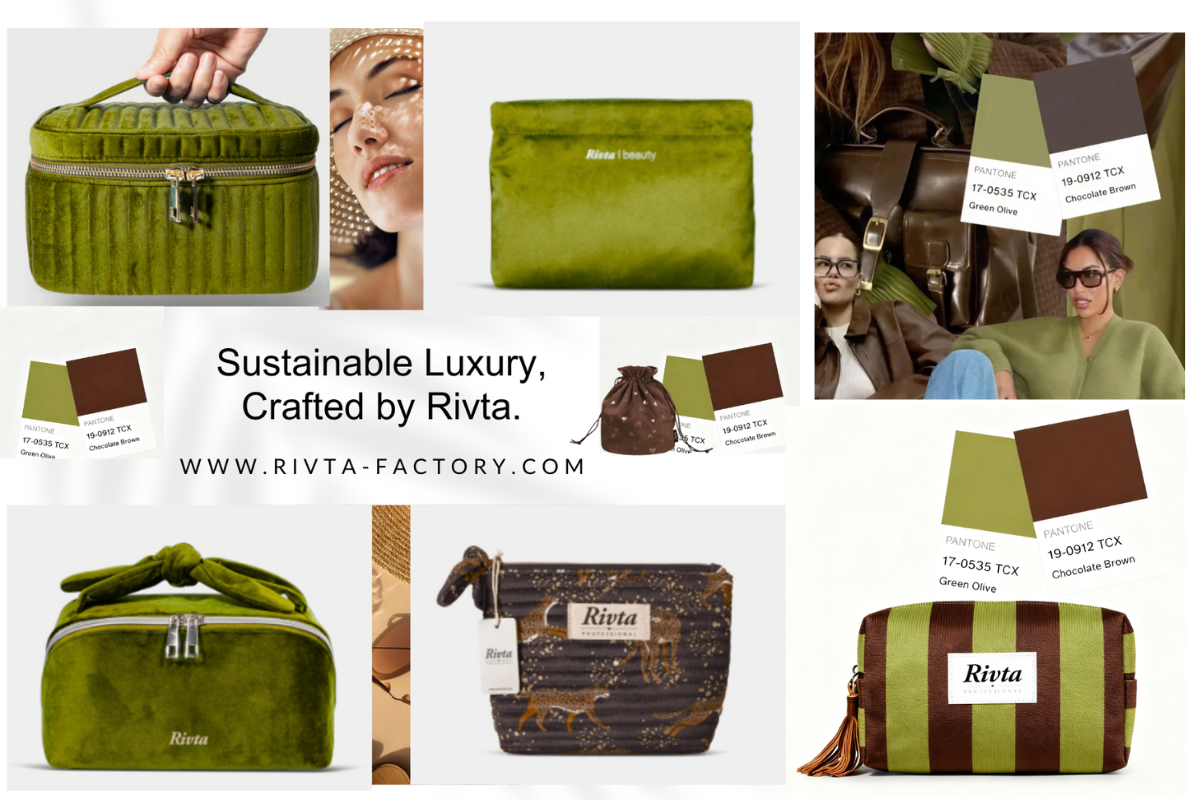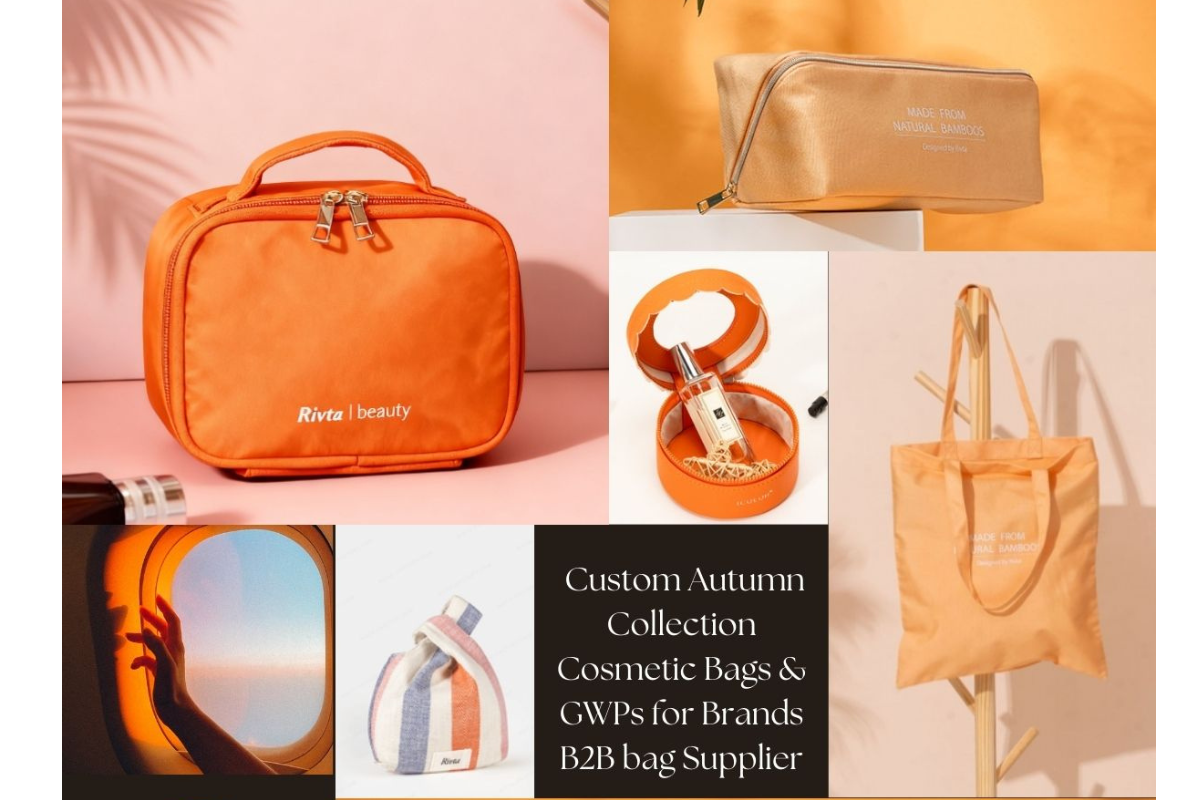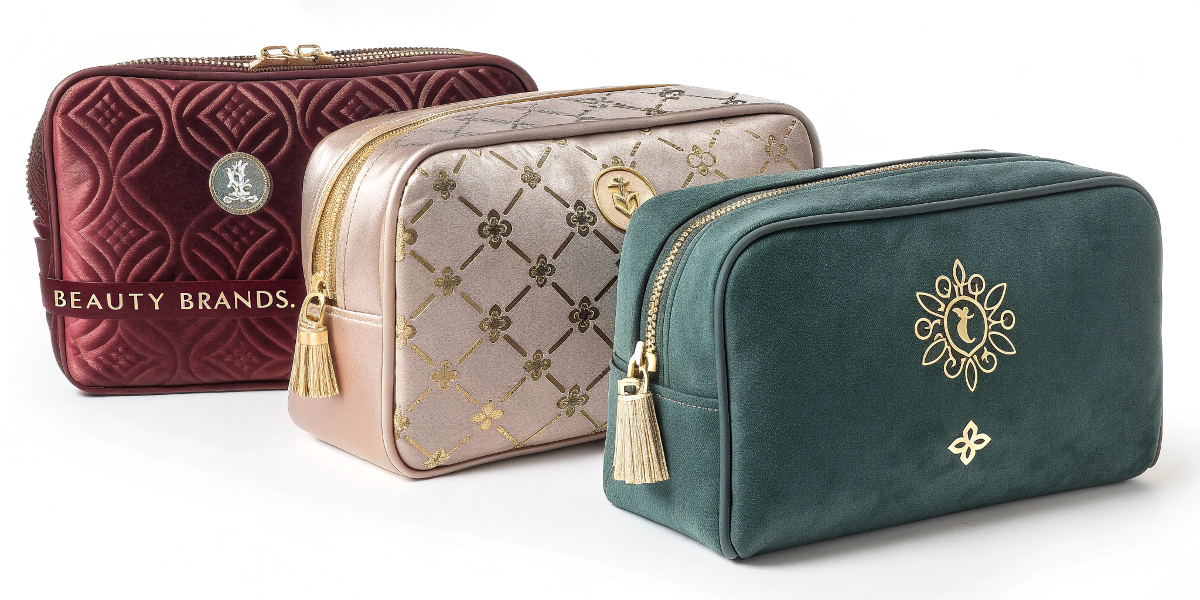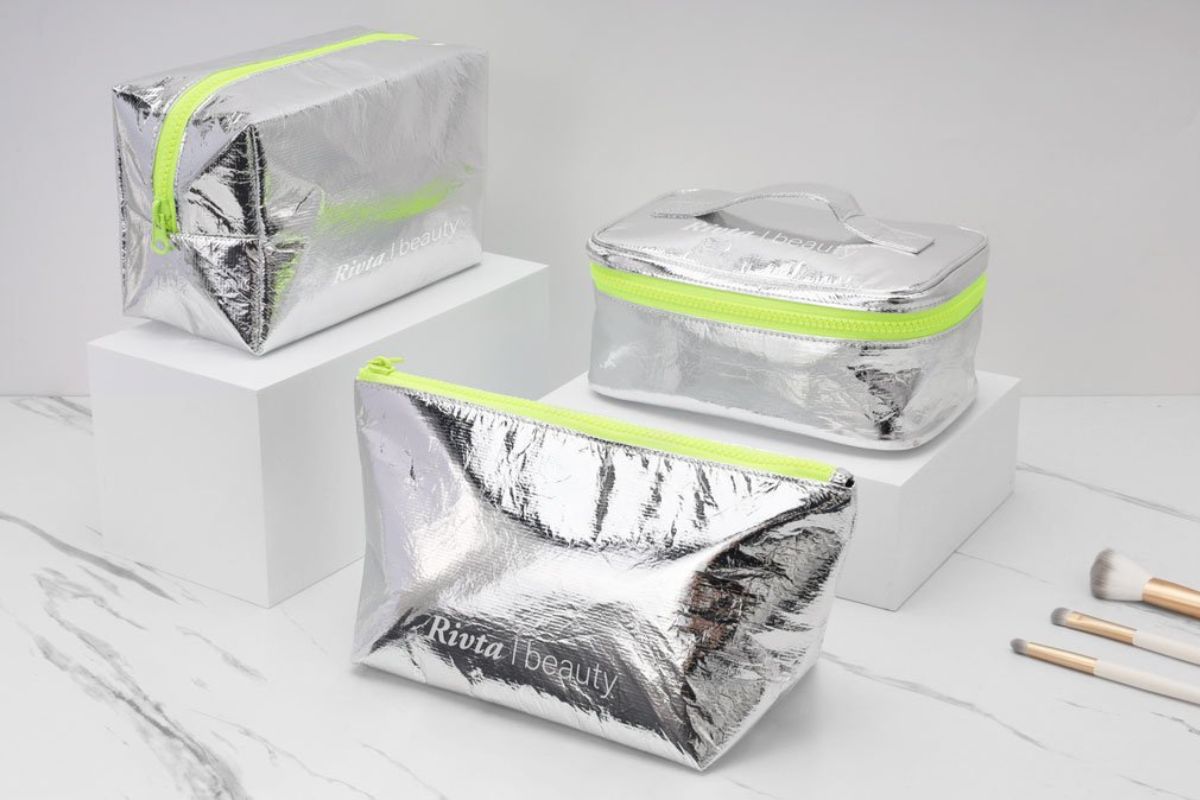Beyond Plastic: Innovative Materials for Green Beauty Cosmetic Bags
In the beauty, wellness, and personal care industries, packaging is no longer just about looks—it's a reflection of brand values. As environmental concerns rise and consumer expectations shift, cosmetic bags—once dominated by plastic—are becoming a key area of sustainable innovation.
Forward-thinking companies are now reimagining every element of their packaging, including accessory items like makeup pouches, toiletry kits, and gift bags. These items may seem secondary, but they play a critical role in how your brand is perceived. Today's customers expect not only high-quality products, but also thoughtful, eco-friendly design choices that align with their values.
At Rivta, we partner with brands that want to reduce their environmental impact without compromising on function or aesthetics. Whether you're sourcing for skincare, essential oils, haircare, outdoor gear, or maternal and infant products, we provide material innovation and reliable production support to help you move beyond plastic—and toward a more sustainable, future-ready brand.
As sustainability becomes a global priority, regulations are catching up—quickly. For beauty and wellness brands operating internationally, it's no longer enough to meet consumer expectations; meeting compliance standards is becoming a matter of business survival.
Why Sustainability Matters in Beauty Packaging
The beauty industry is evolving, and packaging plays a pivotal role in that change. Traditional plastic cosmetic bags, while functional, contribute to a growing waste problem—over 120 billion units of packaging are produced annually by the global cosmetics industry, much of it non-recyclable (Source: Zero Waste Week). For brands in which trust and care are paramount, aligning with eco-conscious values isn't just good ethics—it's good business. Consumers, especially in markets like Australia with its strong environmental ethos, are willing to pay a premium for sustainability—73% according to a Nielsen survey.
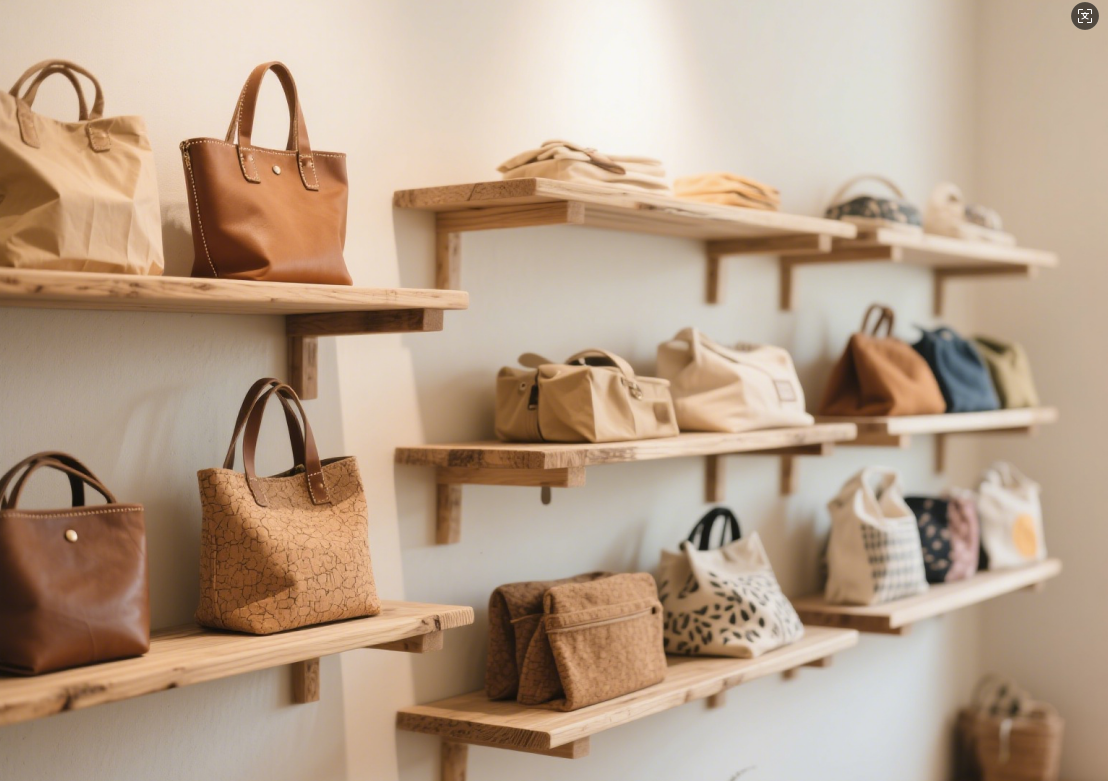
Key Policies Driving Change
- European Green Deal: The EU's sweeping environmental policy aims for net-zero carbon emissions by 2050. It includes requirements on packaging recyclability, extended producer responsibility (EPR), and product lifecycle transparency.
- US Plastic Pollution Reduction Act: Targets single-use plastic and mandates recycled content for certain types of packaging. California, New York, and Washington state have already introduced stricter packaging rules.
- Asia-Pacific Policies:
- Japan: Introduced a "Plastic Resource Circulation Act" in 2022 requiring clearer product labeling and business-level recycling initiatives.
- South Korea: Mandates "eco-label" use and has a strict "zero waste to landfill" goal by 2030.
- China: National policies have banned certain plastic items, with new mandates emerging around green product certification and industrial waste reuse.
These changes mean that choosing eco-friendly materials is not just brand-driven—it's compliance-driven. At Rivta, we stay ahead of these policies by sourcing and testing materials that meet both national and international requirements.
Brands Leading the Way
Seeing these materials in action can spark ideas for your own product line. Here are some standout examples:
- Carry Courage: Their cork fabric bags, lined with organic cotton, balance sustainability and durability—great for bulk skincare orders.
- Willow Earth: Combining cotton canvas, and washable kraft paper, they emphasize ethical sourcing, ideal for transparent trade partnerships.
- Terra Thread: Fair trade organic cotton with minimal polyester zippers offers ethical durability for beauty or infant brands.
- Tiradia Cork: Natural cork bags that are biodegradable and bold—perfect for essential oil packaging.
- Classic Packing: A B2B favorite with cotton canvas, jute, and Tyvek options, plus customization for branding.
New-Generation Vegan Leathers: Beyond the Basics
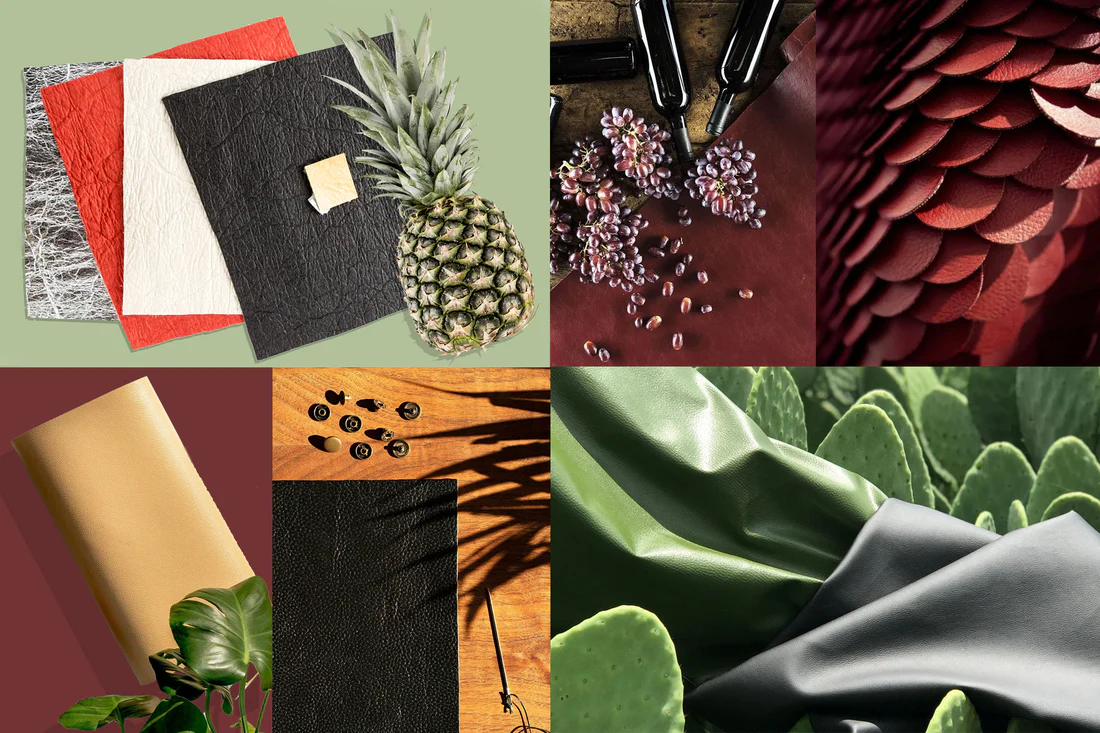
The vegan leather revolution is moving past PU and PVC substitutes. Today, brands are embracing bio-based leathers—materials made from plants, fungi, or food waste. These innovative options allow you to achieve a leather-like feel while aligning with cruelty-free and circular values.
Mushroom Leather (Mycelium)
Made from the root structure of fungi, mycelium leather is strong, flexible, and fully biodegradable. Companies like MycoWorks and Bolt Threads have pioneered scalable production. Ideal for premium beauty pouches or brand collaborations.
Design Advantage: Smooth texture, easy to emboss, compostable.
Apple Leather
Produced from leftover apple peels from the juice industry, this material has a similar feel to PU leather but is partly biodegradable and low-carbon. Great for soft cosmetic pouches or gift sets.
Best For: Skincare brands or clean-beauty companies with fruit/plant-based positioning.
Cactus Leather
Harvested from mature cactus pads in Mexico, this material requires minimal water and is naturally durable. Often used in handbags, but now appearing in structured beauty boxes and organizers.
Ideal Use: For brands targeting outdoor, desert, or natural luxury aesthetics.
Pineapple Leaf Fiber
A non-woven textile made from the cellulose fibers of pineapple leaves—a byproduct of agriculture. Lightweight, breathable, durable. Brands like and H&M have already experimented with Piñatex accessories.
Rivta Perspective: We're currently testing Piñatex alternatives in our design lab to assess embossing, water resistance, and stitching performance.
Design Applications & Material Versatility
Eco-materials don't mean sacrificing aesthetics or creativity. In fact, they often open up more storytelling and textural possibilities.
Dyeing & Color Fastness
Natural dyes and low-impact dye processes are now viable on RPET, bamboo, and cork. For example:
- RPET can be color-matched with near exact Pantone values.
- Kraft paper responds well to vegetable-based dyes and screen printing.
- Cork allows for both laser engraving and UV digital printing.
Surface Treatments & Structure
- Washable Kraft Paper can be crinkled for a leather-like finish.
- Jute and Linen can be laminated or waxed for added water resistance.
- PLA blends offer lightweight stiffness ideal for molded shapes or travel kits.
Stitching & Trims
Rivta works with biodegradable threads, metal-free zippers, and bamboo-based tags to help clients build a fully sustainable packaging system.
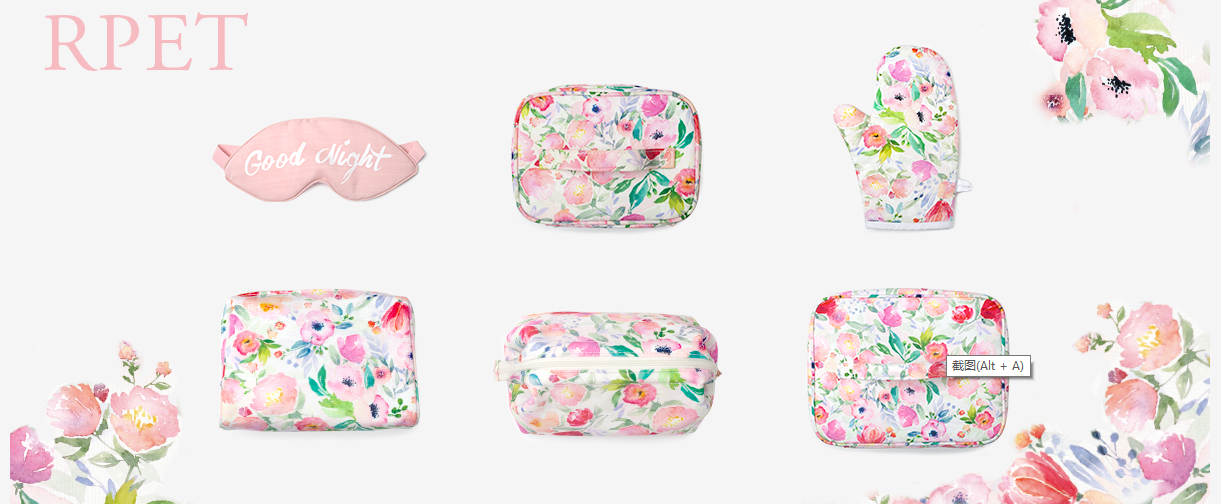
Customization Without Compromise
Many small and mid-sized beauty brands worry that choosing sustainable means sacrificing flexibility—but that's not the case.
Rivta's Custom Capabilities:
| Feature | Available for Sustainable Materials | MOQ |
|---|---|---|
| Color Matching (Pantone) | ✔️ (RPET, Tyvek, PLA) | 500 pcs |
| Logo Printing | ✔️ Screen, UV, Emboss | 300 pcs |
| Sample Turnaround | ✔️ 7–10 working days | - |
| Packaging (FSC-certified) | ✔️ Box, Wrap, Sticker | 500 pcs |
| Add-ons (Refill System, QR Code) | ✔️ Support available | - |
Whether you're a startup brand looking to test a small batch, or a distributor needing thousands of units across SKUs, Rivta supports customization at every level.
Industry Use Cases: Which Material Fits Your Market?
Maternal & Infant Products
Needs: Non-toxic, washable, natural look, gentle feel.
Recommended Materials: Organic cotton, bamboo fiber, washable kraft paper.
Skincare & Beauty
Needs: Elegant texture, clear branding, eco messaging.
Recommended Materials: RPET with fine weave, canvas with foil stamping, PLA-blend pouch.
Haircare
Needs: Moisture resistance, larger volume kits, durable structure.
Recommended Materials: Tyvek®, kraft paper with lamination, WPC.
Outdoor & Travel
Needs: Rugged durability, lightweight, eco statement.
Recommended Materials: Jute with wax coating, bamboo fiber, vegan leather.
Trade & Promotional
Needs: High perceived value, brand visibility, budget-friendly volume.
Recommended Materials: RPET, Tyvek, cotton.
Regional Market Preferences: One Material Doesn't Fit All
Different markets have different sustainability priorities. Understanding these preferences can improve market entry success and product-market fit.
Australia & New Zealand
- Strong preference for organic textiles and FSC-certified paper.
- Recyclability and compostability are key decision factors.
North America
- Consumers prioritize recycled content and transparency.
- Vegan certifications and brand storytelling are critical.
EU Countries
- Compliance with EPR and eco-labels (Blue Angel, Nordic Swan).
- High demand for minimalist design with premium feel.
Japan & South Korea
- Emphasis on aesthetic refinement and tactile quality.
- Transparency in material origin and traceability is expected.
Middle East
- Luxury-oriented presentation with sustainability as a bonus.
- Cork, bamboo, and vegan leather gaining traction.
Rivta offers market-specific recommendations and language support (e.g., localized tags, QR-code integration for sustainability data).
AI & Digital Tools for Smarter Sourcing
At Rivta, we leverage AI not only in production planning—but also to support brands, especially those without in-house designers or material experts.
How AI Supports You:
- Style Generator: Convert moodboards or references into viable pouch styles.
- Virtual Sampling: Visualize material, logo, and color combinations without physical samples.
- Material Suggestion Engine: Based on your industry, budget, and geography, we recommend optimized eco-material mixes.
Example: A small brand from Australia requested a "nature-inspired bag that's under 50g." We used AI to suggest a linen mixture with bamboo lining and finalized the sample within 7 working days.

Building a Business Case for Sustainable Packaging
Making the switch isn't just about ethics—it's about competitive advantage. Here's why:
- Customer Preference: 66% of global consumers prefer sustainable brands (IBM).
- Repeat Purchases: Eco-conscious packaging boosts brand loyalty, especially among Gen Z and Millennial consumers.
- Cost Stability: Recycled and renewable materials insulate your costs from the volatility of petrochemical-based supply chains.
- Regulatory Readiness: Early adoption of sustainable formats avoids disruption from future bans or regulations.
Measuring the Impact: Environmental and Business Outcomes
Choosing eco-materials for cosmetic bags isn't just a "nice-to-have" anymore. It's a measurable business advantage.
Environmental Gains
- RPET vs. Virgin Plastic: Using 1 ton of RPET saves 6,000 kWh of energy and reduces carbon emissions by up to 60% (Source: EPA).
- Biodegradable Materials: PLA decomposes in 90-180 days in industrial compost, compared to 450+ years for plastic.
- Natural Fibers: Jute harvesting supports biodiversity and requires no tree cutting; bamboo regenerates in months.
Commercial Advantages
- Brand Loyalty: 66% of consumers say they're more loyal to brands that use sustainable packaging (Source: IBM).
- Higher Margins: Eco-friendly products often command 15–25% price premiums.
- Retail Preference: Buyers from clean beauty chains, refill stations, and gift box distributors prioritize low-impact materials.
Final Material Comparison Table (Expanded)
| Material | Biodegradability | Carbon Footprint | MOQ | Custom Print | Market Fit |
|---|---|---|---|---|---|
| RPET | ❌ | Medium | 500 | ✔️ High | Skincare, Promo |
| PLA | ✔️ | Low | 800 | ✔️ Limited | Baby, Refill Kits |
| Bamboo Fiber | ✔️ | Low | 500 | ✔️ Laser/UV | Premium Skincare |
| Cork Leather | ✔️ | Low | 1000+ | ✔️ Emboss | Luxe Eco Brands |
| Kraft Paper | ✔️ | Medium | 300 | ✔️ Print/Stamp | Gift, Skincare |
| Tyvek | ❌ | Medium | 500 | ✔️ Screen | Outdoor, Haircare |
| Apple Leather | ✔️ | Medium | 1000+ | ✔️ Heat Deboss | Clean Beauty |
| Jute | ✔️ | Low | 300 | ✔️ Woven Label | Organic Brands |
Packaging Is Storytelling—Make It Count
Every pouch, bag, and wrap is part of your customer's unboxing experience. It speaks volumes before they even try the product inside. That's why materials matter. Texture, weight, message, and design all shape perception.
Sustainable packaging does more than reduce impact—it builds brand equity, opens up new markets, and aligns your business with the values of today's conscious buyer.
Designing a sustainable bag is just the beginning. Telling the story behind the materials and production process helps consumers connect with your values.
Visual Tactics
- Embossed QR codes linking to traceability data
- Custom tags listing material sources and eco-benefits
- Behind-the-scenes video of Rivta production using AI-generated storytelling
Content Ideas for Brands
- "Unbagging" videos showing the lifecycle of your eco-bag
- Blog posts and email campaigns on your switch to greener options
- Collaboration with eco-conscious influencers or subscription box curators
Looking Ahead: The Future of Green Cosmetic Bags
What does the future hold? Here are a few innovations on the horizon:
- Disappearing Packaging: Soluble cosmetic bags made of starch compounds for single-use items
- Smart Textile Labels: Embedded NFC chips that show sustainability data
- Regenerative Materials: Seaweed-based textiles, algae ink prints, and carbon-negative jute blends
- Blockchain-Verified Supply Chains: Real-time tracking of materials from source to shipping
Rivta is actively investing in partnerships with fabric innovators and testing new materials in small-batch production runs for early-adopter clients.
How Rivta Supports Your Transition to Sustainable Cosmetic Bags
At Rivta, we're not just manufacturers—we're collaborators. We work with brands of all sizes to support their journey toward sustainable packaging. Here's how:
- Low Minimum Order Quantities: We support small and mid-sized brands with MOQs starting from as low as 500 pcs per style.
- Material Expertise: We source, test, and verify a wide range of eco-materials, providing clear certifications like GRS, FSC, or OEKO-TEX where needed.
- Rapid Sampling: Our digital sample library and fast prototyping process shorten your development cycle.
- Compliance & Documentation: Need REACH, SVHC, or CPSIA compliance? We've got you covered.
- Carbon-Neutral Logistics: Through our global logistics partners, we offer carbon offset shipping for international orders.
Our team also speaks the language of your brand—both literally and creatively. From Pantone matching to dieline adjustments, we ensure your cosmetic bag is not only eco-responsible but also beautifully executed.
Your Next Step Beyond Plastic
The move beyond plastic is redefining cosmetic bags with materials like recycled RPET, biodegradable PLA, and natural bamboo. Brands like Carry Courage, Terra Thread, and Rivta prove sustainability can be practical and striking. Trends like reusable designs and ethical sourcing signal a future where green beauty thrives.
For your company—whether in skincare, hair care, or maternal products—this is a chance to meet consumer demand, enhance your offerings, and contribute to a healthier planet. At Rivta, we're here with durable, innovative solutions tailored to your needs, backed by a commitment to ethical practices and carbon-neutral shipping.
Thanks for exploring this journey with us. Ready to source smarter or learn more about Rivta's offerings? Reach out—we'd love to collaborate on a greener, more successful future. Visit us at https://rivta-factory.com/.
